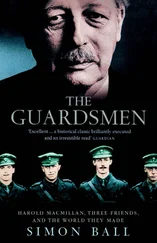What happened next is unclear but, on 7 September, Menzies told Banks that he had been appointed surgeon to the expedition and was expecting to sail soon.[44] Menzies was the perfect candidate: he had served on naval vessels, had studied with John Hope, knew his plants and the Linnaean system well. He even had a highly glowing reference from his old teacher.[45]
Did Banks recommend him or was it Hope? Menzies’s letter to Banks, unfortunately, reveals nothing.[46] All we can be certain of is that Menzies did ask Banks to intervene with Etches to allow him more freedom to collect on the voyage and that Etches agreed; and that Menzies visited Soho Square on 27 September while Banks was at Revesby to offer some more plants from Halifax (including an orchid, which Jonas Dryander, Banks’s librarian, thought superb) and presumably to acquaint himself with Banks’s Pacific collection.[47]
Though Menzies kept predicting an early departure, in fact, the Prince of Wales and the Princess Royal did not leave the English coast until 16 October 1786.[48] On 16 November, when the ships were in the Cape Verde Islands, Menzies wrote his first letter to Banks. He thanked him for writing to Etches to give him more freedom to collect than was originally stated because ‘the west coast of N. America presents to me a new & an extensive field for Botanical researches … & I can assure you that I shall lose no Opportunity in collecting whatever is new, rare or useful.’[49] Menzies emphasised that his confidence was supported by experience: before he had left for the voyage, William Aiton at Kew had shown him a specimen of Houstonia caerulea (popular name little or azure bluet) which he had raised from seed sent to him from Nova Scotia, the implication being that if he could do it once he could do it again and again.[50]
The ships would be heading for Cape Horn before entering the Pacific. Colnett had planned to stop at what was then called Staten Island, but which now has the name of Isla de los Estados, and which lies about twenty miles off the southernmost tip of Tierra del Fuego. His instructions were to land Samuel Marshall, a naval lieutenant, and the son of Captain Samuel Marshall, whom Colnett had befriended in Cowes, with a party of fifteen men, to establish a sealing settlement.[51] Menzies was going to take this opportunity to collect specimens of Drymis winteri (then referred to as Wintera aromatica and popularly known as Winter’s bark), from which an anti-scurvy medicament could be prepared – its properties were first noted by Captain John Winter, after whom the plant is named, in 1578, and reiterated forcefully by Hans Sloane in 1693. (Banks, who had seen the plant when he was in Tierra del Fuego on the Endeavour , had specifically asked for it to be collected.)[52]
On 17 November, the day after Menzies wrote his letter, the ships continued their voyage, passing from the hot and humid tropics to the squally and snowy South Atlantic. On 26 January 1787, the ships anchored in New Years Harbour, Staten Island, almost in the exact same spot as the Resolution when it was there – with Colnett – in 1775. While the main task – landing the sealing party – was proceeding, Menzies lost no time botanising.
As the ships were about to depart, Menzies wrote to Banks. The weather had not been kind ‘in this wild and inhospitable clime’ but he had managed to make several excursions and find many plants that were not listed in Linnaeus. Of equal, if not greater importance, Menzies was delighted to have found the Wintera aromatica growing everywhere and in flower – ‘This beautiful tree … loads the circumambient Air with a most pleasing aromatic Odor.’[53] Menzies had collected and potted some twenty young plants and, as he had no possibility of keeping them alive during his voyage, he was assured by Lieutenant Marshall that he would take them back to England on the relief ship that was to be sent from London for the party, together with seeds which he would collect for Menzies.[54]
Menzies carefully told Banks that though the plants were addressed to him, he was to send some of them to John Hope in Edinburgh. Menzies did not know that two days before he arrived in Cape Verde, Hope had died in Edinburgh – when Menzies did finally learn of Hope’s death, he referred to him as ‘my best and only friend’.[55] The plants fared just as badly, as it turned out. The Duke of York , the relief ship owned by Etches, left on 21 April 1787 for Staten Island but, on 11 September, while at New Years Harbour it went down. The crew and the sealing party were all saved as they managed to leave in boats, but the plants went down with the ship.[56]
Though the intention was to sail to Hawaii, which Cook had visited in January 1778, Colnett decided to go straight for Nootka Sound.[57] The decision certainly meant that Colnett would be arriving at his destination sooner than anticipated but, on the other hand, the long sea voyage was bringing on scurvy. Everyone was thankful that on 5 July 1787, after about five months at sea, the coastline of Vancouver Island was sighted: the next day they were visited by several canoes bearing a few furs.[58]
From now on the season and the weather would dictate the expedition’s plans. The general idea was to begin at Nootka Sound and move northward along the coast, trading as much as possible. But progress turned out to be slow as the ships were in poor shape. After sailing along Vancouver Island, they set course for the Queen Charlotte Islands where they anchored for two weeks during the second half of August 1787. Colnett, fearing more damage to the ships, sailed across the strait – Hecate Strait – that separated the islands from the coast, and he made base on an island which Menzies named for his London patron – Banks Island. There they remained for almost three months to repair the damage, by which time, as Colnett remarked, winter had definitely closed in: ‘the Country half cover’d from the summits of its hills to the water’s Edge with snow’. On 19 November, the Prince of Wales and the Princess Royal departed the Pacific Northwest to spend the winter in Hawaii.[59]
However, the time there did not go well: violent confrontations soured relations and trade. Colnett must have been anxious to leave and, on 13 March 1788, full of provisions and now with three Hawaiians on board, who wished to join the voyage, the Prince of Wales and the Princess Royal headed back to the Pacific Northwest.[60] They arrived safely in April.
For the next three or four months both ships traded, one southward and the other northward with the intention of meeting at any one of several predetermined points. This never happened, but thanks to the information that was left in letters in the safe-keeping of Haida chiefs on the coast, Colnett knew that Charles Duncan, in command of the Princess Royal , was safe. Within a day of each other, on 17 and 18 August 1788, both ships left the coast for Hawaii with their cargo of pelts, the Princess Royal having out-performed the Prince of Wales .[61]
All along, Menzies had been botanising whenever he could and had found many plants that were new to western science, including a variety of penstemon with large lavender to purple flowers, that was named in his honour.[62] He continued to collect specimens, whenever he could, some of them which were new to Europe such as the trailing raspberry ( Rubus pedatus ), and Sanguisorba menziesii , a plant with grey-green leaves and red flowers, in the shape of bottlebrushes.[63]
The first part of the expedition was now over. It was time to realise the proceeds of the venture, to sell the pelts in Canton during the trading season which would begin in October.
Читать дальше












